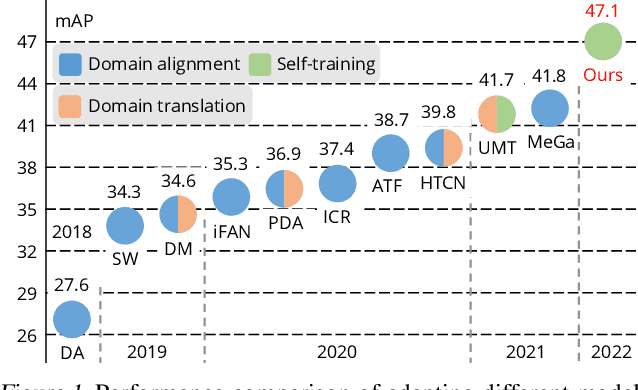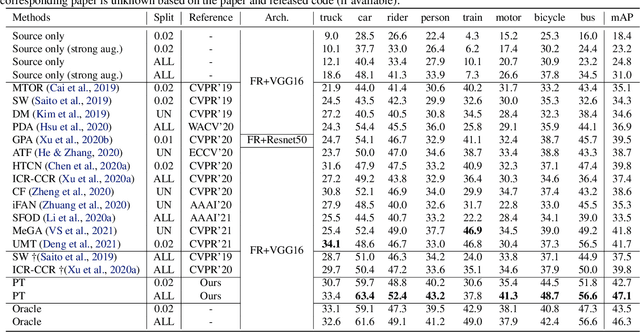Yunfeng Yan
Instruct-ReID++: Towards Universal Purpose Instruction-Guided Person Re-identification
May 28, 2024



Abstract:Human intelligence can retrieve any person according to both visual and language descriptions. However, the current computer vision community studies specific person re-identification (ReID) tasks in different scenarios separately, which limits the applications in the real world. This paper strives to resolve this problem by proposing a novel instruct-ReID task that requires the model to retrieve images according to the given image or language instructions. Instruct-ReID is the first exploration of a general ReID setting, where existing 6 ReID tasks can be viewed as special cases by assigning different instructions. To facilitate research in this new instruct-ReID task, we propose a large-scale OmniReID++ benchmark equipped with diverse data and comprehensive evaluation methods e.g., task specific and task-free evaluation settings. In the task-specific evaluation setting, gallery sets are categorized according to specific ReID tasks. We propose a novel baseline model, IRM, with an adaptive triplet loss to handle various retrieval tasks within a unified framework. For task-free evaluation setting, where target person images are retrieved from task-agnostic gallery sets, we further propose a new method called IRM++ with novel memory bank-assisted learning. Extensive evaluations of IRM and IRM++ on OmniReID++ benchmark demonstrate the superiority of our proposed methods, achieving state-of-the-art performance on 10 test sets. The datasets, the model, and the code will be available at https://github.com/hwz-zju/Instruct-ReID
Triplet Attention Transformer for Spatiotemporal Predictive Learning
Oct 28, 2023Abstract:Spatiotemporal predictive learning offers a self-supervised learning paradigm that enables models to learn both spatial and temporal patterns by predicting future sequences based on historical sequences. Mainstream methods are dominated by recurrent units, yet they are limited by their lack of parallelization and often underperform in real-world scenarios. To improve prediction quality while maintaining computational efficiency, we propose an innovative triplet attention transformer designed to capture both inter-frame dynamics and intra-frame static features. Specifically, the model incorporates the Triplet Attention Module (TAM), which replaces traditional recurrent units by exploring self-attention mechanisms in temporal, spatial, and channel dimensions. In this configuration: (i) temporal tokens contain abstract representations of inter-frame, facilitating the capture of inherent temporal dependencies; (ii) spatial and channel attention combine to refine the intra-frame representation by performing fine-grained interactions across spatial and channel dimensions. Alternating temporal, spatial, and channel-level attention allows our approach to learn more complex short- and long-range spatiotemporal dependencies. Extensive experiments demonstrate performance surpassing existing recurrent-based and recurrent-free methods, achieving state-of-the-art under multi-scenario examination including moving object trajectory prediction, traffic flow prediction, driving scene prediction, and human motion capture.
Retrieve Anyone: A General-purpose Person Re-identification Task with Instructions
Jul 04, 2023



Abstract:Human intelligence can retrieve any person according to both visual and language descriptions. However, the current computer vision community studies specific person re-identification (ReID) tasks in different scenarios separately, which limits the applications in the real world. This paper strives to resolve this problem by proposing a new instruct-ReID task that requires the model to retrieve images according to the given image or language instructions.Our instruct-ReID is a more general ReID setting, where existing ReID tasks can be viewed as special cases by designing different instructions. We propose a large-scale OmniReID benchmark and an adaptive triplet loss as a baseline method to facilitate research in this new setting. Experimental results show that the baseline model trained on our OmniReID benchmark can improve +0.6%, +1.4%, 0.2% mAP on Market1501, CUHK03, MSMT17 for traditional ReID, +0.8%, +2.0%, +13.4% mAP on PRCC, VC-Clothes, LTCC for clothes-changing ReID, +11.7% mAP on COCAS+ real2 for clothestemplate based clothes-changing ReID when using only RGB images, +25.4% mAP on COCAS+ real2 for our newly defined language-instructed ReID. The dataset, model, and code will be available at https://github.com/hwz-zju/Instruct-ReID.
Learning Domain Adaptive Object Detection with Probabilistic Teacher
Jun 13, 2022



Abstract:Self-training for unsupervised domain adaptive object detection is a challenging task, of which the performance depends heavily on the quality of pseudo boxes. Despite the promising results, prior works have largely overlooked the uncertainty of pseudo boxes during self-training. In this paper, we present a simple yet effective framework, termed as Probabilistic Teacher (PT), which aims to capture the uncertainty of unlabeled target data from a gradually evolving teacher and guides the learning of a student in a mutually beneficial manner. Specifically, we propose to leverage the uncertainty-guided consistency training to promote classification adaptation and localization adaptation, rather than filtering pseudo boxes via an elaborate confidence threshold. In addition, we conduct anchor adaptation in parallel with localization adaptation, since anchor can be regarded as a learnable parameter. Together with this framework, we also present a novel Entropy Focal Loss (EFL) to further facilitate the uncertainty-guided self-training. Equipped with EFL, PT outperforms all previous baselines by a large margin and achieve new state-of-the-arts.
* To appear in ICML 2022. Code is coming soon: https://github.com/hikvision-research/ProbabilisticTeacher
 Add to Chrome
Add to Chrome Add to Firefox
Add to Firefox Add to Edge
Add to Edge